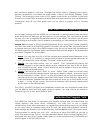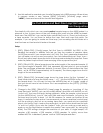
automatically names the duplicate by adding an (*) asterisk to the original name. You
can rename it, if you wish.
Record a beat, make a bunch of duplicates that you slice up via the Wave Start and
End points, into individual events or hits. You can tune, EQ and filter these smaller hits and
then add them back into the mix to reinforce the main loop, accenting selected beats.
Or create unique stutter steps with them. You can reverse the hits and super impose
them on the forward playing original loop to create a wacky inside-out effect. Send
some of them into a special effect you’ve set up. Let your imagination run wild.
Pitch Bend Control
What’s to get excited about? Pitch Bend is pitch bend, right? Try using this trick on your
dance loops. [EDIT]:[MIDI/CTRL]:[Vel&PB] screen. Here you can set the Pitch Bend
parameter to control playback pitch in the “Normal” way or set it to “Slow” to get the
sound of a turntable coming to a stop when you move the wheel down. Or try
“Slow&Reverse” – this will slow down playback to almost a full stop at about half way in
the down direction but then start up the played portion of the sample, in reverse when
the wheel is at the full down position. With a little practice you can “work the wheel” like
scratching a turntable. Here’s how this works: you are playing data into an audio buffer.
The more you play into the buffer, the more there is to playback in reverse. You can
“cue” and repeat segments by aggressively working the wheel. Other pitch bend modes
are Stop and Stop&Reverse. These use the pitch wheel to initiate play of the loop. There
are also PB settings for different values for PB up and PB down over a 2 octave range.
Real time Beat Change
Among the 54 effect algorithms per effect processor is Beat Change. This unique effect,
which is typically used in the 100% Wet balance position, takes incoming signal and
allows you to adjust the tempo without affecting the pitch. This, of course, defies the laws
of physics. The demonstration disk “Drum Variations” shows this off to good effect. Load
this disk into the A3000. If it is your first time, simply place the disk in the A3000 drive and
power up. The A3000 has a “diskette autoload” feature that will load the data. The
second Program 002 “Modwheel” shows off the Beat Change effect. The samples are
mapped just below middle “C”, and as you hold down a key that triggers a loop you
can move the modulation wheel, which will raise and lower the tempo, yet the sound
does not “munchkin-ize”.
There are 9 programmable parameters in the Beat Change algorithm, as follows:
1. Beat Change (Ctrl) – leave this set at 0 because this is what the assigned controller
changes in real-time.
2. Beat Range – amount of overall tempo change (playback speed) – value should
equal Pitch Range
3. Pitch Change (Ctrl) – leave this set at 0 because this is what the assigned controller
changes in real-time.
4. Pitch Range – amount of overall pitch change. Value should equal Beat Range
5. Accuracy Type – weights the result toward sonic or rhythmic accuracy.
6. EQ Frequency
7. EQ Gain
8. EQ Width


















